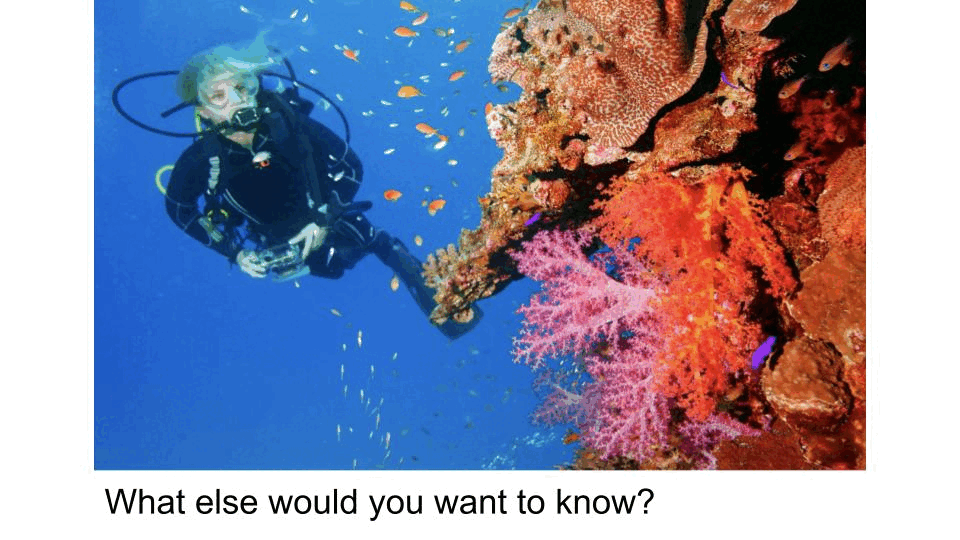This repository includes the code and dataset for the paper Context-VQA: Towards Context-Aware and Purposeful Visual Question Answering.
To download the initial version of our dataset, please navigate to ContextVQA_dataset/ for more information.
To replicate our analyses in the paper, please navigate to scripts/ for more information.
Visual question answering (VQA) has the potential to make the Internet more accessible in an interactive way, allowing people who cannot see images to ask questions about them. However, multiple studies have shown that people who are blind or have low-vision prefer image explanations that incorporate the context in which an image appears, yet current VQA datasets focus on images in isolation. We argue that VQA models will not fully succeed at meeting people’s needs unless they take context into account. To further motivate and analyze the distinction between different contexts, we introduce Context-VQA, a VQA dataset that pairs images with contexts, specifically types of websites (e.g., a shopping website). We find that the types of questions vary systematically across contexts. For example, images presented in a travel context garner 2 times more “Where?” questions, and images on social media and news garner 2.8 and 1.8 times more “Who?” questions than the average. We also find that context effects are especially important when participants can’t see the image. These results demonstrate that context affects the types of questions asked and that VQA models should be context-sensitive to better meet people’s needs, especially in accessibility settings.
The Context-VQA dataset features six contexts: Travel, Shopping, Health, Social Media, News, and Science Magazines. Prior research has shown that the context in which the image appears affects the kinds of questions asked, as well as the details required to be provided in the model's answer. For further information on this work, please refer to Stangl et al (2021) and Stangl et al (2020). We present an example of how this might apply to the VQA domain below.
This image shows a scuba diver near a coral reef. The description in the GIF was generated by BLIP-2.
Imagine you are browsing a travel website, with the goal of traveling to a new location, when you encounter this image. In this case, imagine that you cannot see the image directly, and that you only have access to the image description. What else would you need to know about this image? Here is an example question-answer pair, pulled from Context-VQA.
Question: Where is the scuba diver
Answer: Underwater near some small fish, corals, and other sea life.
Imagine you are browsing a science magazine, with the goal of learning more about recent scientific developments, when you encounter this image description. In this case, imagine that you cannot see the image directly, and that you only have access to the image description. What else would you need to know about this image?
Question: Is there any fish or animals in the photograph?
Answer: Yes. There are small fish with orange-golden scales floating between the diver and the coral.
Imagine you are browsing a social media website, with the goal of learning more about your connections, when you encounter this image. In this case, imagine that you cannot see the image directly, and that you only have access to the image description. What else would you need to know about this image?
Question: Are there any people in this picture?
Answer: There are no people in the picture.
Imagine you are browsing a travel website, with the goal of traveling to a new location, when you encounter this image description. In this case, imagine that you cannot see the image directly, and that you only have access to the image description. What else would you need to know about this image?
Question: How much seating is around the pool?
Answer: There is somewhere around 10 to 20 seats near the pool.
If you use the Context-VQA dataset, you can cite our work as follows.
@inproceedings{Naik-etal:2023,
author = {Naik, Nandita and Potts, Christopher and Kreiss, Elisa},
url={https://arxiv.org/abs/2307.15745},
booktitle={Proceedings of the IEEE/CVF International Conference on Computer Vision (ICCV) Workshops},
year = {2023},
title = {{Context-VQA}: Towards Context-Aware and Purposeful {Visual} {Question} {Answering}}}
For any questions, please contact [email protected]. We welcome any feedback and will do our best to incorporate it.


